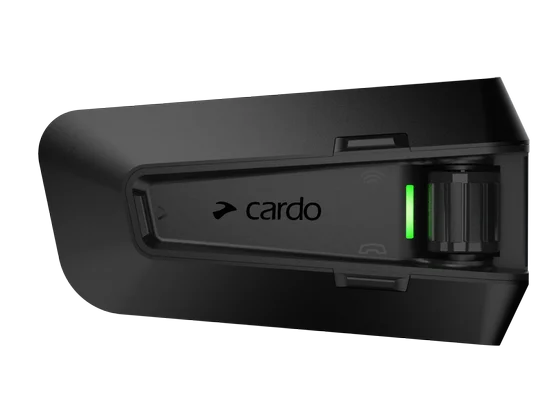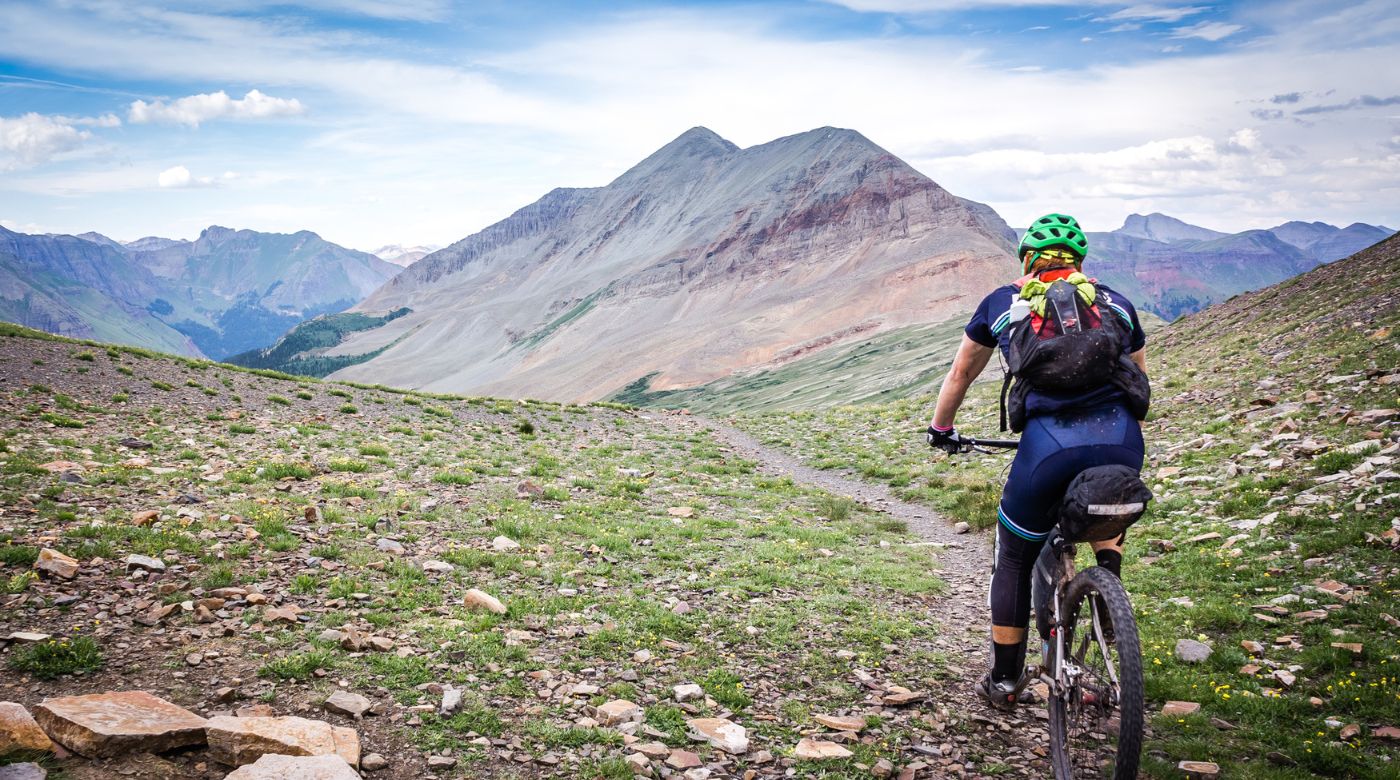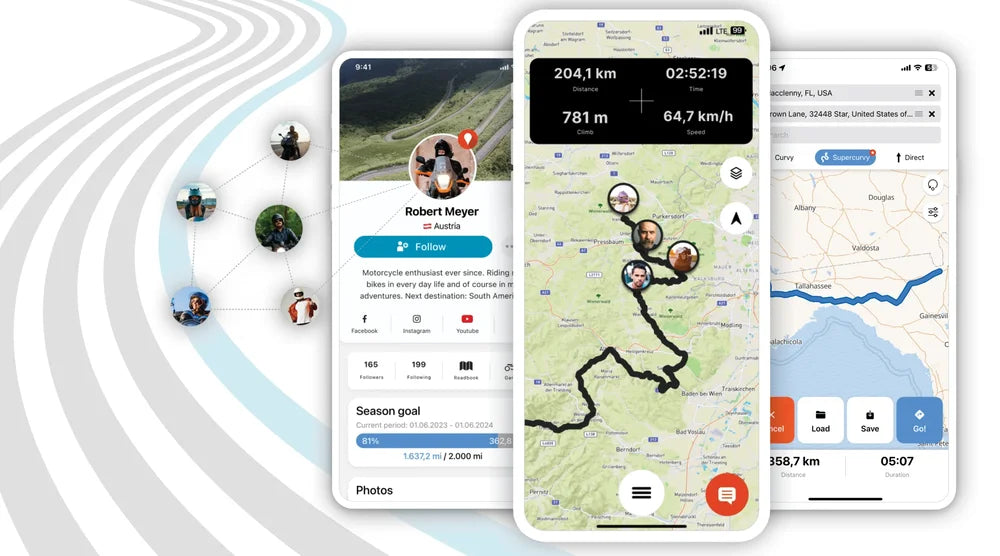Evolution designed the human body to do some amazing things, but coming out of a motorcycle accident unscathed isn’t one of them. Even careful and skillful riders can fall or lose grip when they least expect it, and the body isn’t made to withstand the forces that will hit it when that happens.
Don’t let that scare you away from riding, though. Wearing the right protective gear can dramatically mitigate these risks. However, it does mean that if you’re just getting started learning to ride a motorcycle, it’s important not to wait to pick up the riding gear you need. You'll need a few key pieces when choosing the best beginner motorcycle gear. Our beginner’s guide to the best motorcycle gear for new riders can help you find the right pieces to make your ride safer and more enjoyable.
1. Helmet
If there’s one area where you absolutely shouldn’t skimp, it’s your motorcycle helmet. The safest and most protective helmets are modular and full-face helmets, which include face and chin protection. Three-quarters and half helmets are better than nothing, but they don’t protect the face or chin, where 45 percent of all motorcycle accident impacts happen. (If you choose a model without a built-in face shield, be sure to at least pick up some riding goggles.)
USDOT approval is the minimum safety standard you should look for on a helmet, but the European ECE 22.05 standard and Snell Foundation standard are much more rigorous and will help you find a more protective helmet. Other features to look for include ventilation, removable liner pads for easy cleaning and a shape that fits well and sits comfortably on your head. Note that it’s never a good idea to buy a used helmet, as you can’t always tell when a helmet has been in a crash that will compromise its ability to protect you.
2. Jacket
Motorcycle jackets come in a huge variety of styles, and both leather and textile jackets can offer good protection. Leather jackets are a classic and are a game-changer when it starts to rain or snow, but textile jackets are often more breathable and versatile. If you are interested in street riding and off-road adventures, consider a dual sport jacket designed to provide comfort and protection across different environments.
Look for features like double stitching to improve durability, ventilation features such as mesh lining and a snug (but not overly tight) fit to keep the jacket in place in windy conditions. Many jackets come with built-in armor to protect you in a crash, and others can be upgraded with an additional back protector insert. Do some research on brands that motorcyclists trust, as not everything that looks like a motorcycle jacket is actually designed to function as one.
3. Pants
You might look great in your favorite pair of riding jeans, but they’ll do next to nothing to protect you in a crash. Instead, choose a pair of riding pants designed specifically for motorcyclists, with armor padding in the knees and ankles for impact protection during a crash. Some pants even attach to jackets via zippers or loops to prevent the jacket from riding up in a crash, which can help you avoid the burning pain of road rash.
4. Boots
Riding boots are another must-have for motorcyclists of all skill levels. You want firm support all the way through the leg to help keep your feet and legs straight and stable while riding.
Evaluate a pair of motorcycle boots by twisting them from heel to toe and watching how they react. Any boot that doesn’t maintain its shape will not adequately protect your feet in a crash. You’ll also want non-slip soles to help maintain your grip on any slippery surfaces you might encounter.
5. Gloves
Your hands are among the most vulnerable body parts in a crash after your head, so keep them protected with a good pair of motorcycle gloves. Choose a pair of gloves made from leather or tough synthetic textiles, and make sure to investigate the quality of the stitching.
Another good feature to look for is padding on the knuckles and at the wrist-palm junction, as these are the impact points for your hands in many motorcycle crashes.
6. Helmet Intercom System
Riding is often better together, and riding with a more experienced buddy is an excellent way to sharpen your skills. To get the most out of a group ride, it’s a great idea to grab a motorcycle headset like the Cardo Packtalk Edge or Cardo Freecom 2X. These advanced wireless communication systems will keep you in constant contact with your fellow riders and offer hands-free operation so you can keep your eyes on the road and your hands on the bars.
7. Extreme Weather Gear
As a beginner motorcyclist, being prepared for all types of weather is critical for a comfortable and safe riding experience. One essential item to have is quality rain gear. This typically includes a waterproof rain suit, which can be a lifesaver during sudden downpours.
Look for rain gear made from breathable, waterproof materials that can easily slip over your regular motorcycle riding attire. This keeps you dry without causing overheating.
Additionally, for those cooler rides when facing harsh winds or intensely hot weather, consider adding a neck gaiter or balaclava to your gear list. These accessories protect from windburn and UV rays by covering exposed skin, but they can also be pulled up to cover your face, providing an extra layer of warmth. This is especially beneficial during early morning rides or in cooler seasons when temperatures can unexpectedly drop, ensuring you remain focused on the road and not on the chill.
8. Ear Plugs
For beginner riders, the thrill of the open road also comes with some less obvious hazards, like the constant noise from the wind and your motorcycle's engine. Over time, this exposure to high noise levels can lead to hearing damage.
Ear plugs are a simple yet effective solution to this problem. They're specifically designed to reduce harmful noise levels while still allowing you to hear essential sounds, such as sirens, horns and other traffic alerts that are essential for safe riding. These protective tools are available in various forms — from convenient disposable foam options to reusable custom-molded varieties that provide superior comfort and protection.
9. Visibility Vest
A high-visibility vest is an excellent addition to any beginner motorcycle rider's gear, especially if your riding style involves frequent night rides or traveling in poor weather conditions. These vests are typically designed in bright colors with reflective strips that catch the light from vehicle headlights, ensuring that you stand out to drivers.
Incorporating a visibility vest into your riding attire not only increases your safety but also signals to other road users that you are cautious and aware of your surroundings. It's a simple measure that can have a major impact on your safety, particularly during dusk, dawn and nighttime when visibility is naturally reduced.
10. Tool Kit
Every motorcyclist, especially beginners, should carry a basic tool kit for those unexpected moments on the road when a quick repair or adjustment is needed. A well-assembled motorcycle tool kit typically includes a few essential items that can handle common issues.
Key tools to have are various screwdrivers that fit the different screws on your bike, an adjustable wrench for bolts of varying sizes and a set of pliers for gripping and bending if necessary. These tools should be chosen based on the specific needs of your motorcycle model.
For instance, if your bike has a lot of Allen bolts, make sure your kit has a set of Allen keys. Keeping these tools neatly organized in a compact, easy-to-carry case ensures that they are always ready when you need them.
Gear Up and Hit the Road with Confidence
Finding the best motorcycle gear for beginners can be tricky, but it’s necessary for your comfort and — more importantly — your safety. If you’re still a little unsure, take along a more experienced biker friend when you go shopping, as they can help guide you in what to look for.





